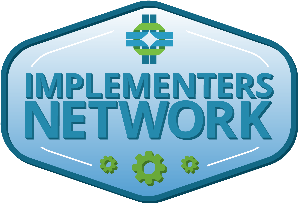Versions Compared
Key
- This line was added.
- This line was removed.
- Formatting was changed.
Welcome to the OpenHIE Implementers Network (OHIN)
OHIN: What is this forum and who is involved?
OpenHIE supports a collaborative space for those leveraging electronic health information by standardizing it in environments with constrained resources.
The OpenHIE Implementers Network (OHIN) provides a peer-learning forum for implementers to engage with one another, interact with the OpenHIE community, and create bridges between networks through OpenHIE hosted events. OHIN events are open to everyone, with special emphasis for the work of country implementers, domain experts, and developers wanting to adopt and implement OpenHIE standards.
What do
typicalOHIN events look like and how can I participate?
OHIN takes place in the form of open, virtual meetings held throughout the year, showcasing OpenHIE implementations, technical demonstrations, and other topics of interest to the community. In addition, resources and updates surrounding the community are also shared. Following these main meeting topics, space is also saved for attendees to share insights and challenges they are experiencing.
Community members are encouraged to bring questions, problems, and ideas unique to implementing the OpenHIE Architecture and tools to these meetings to take advantage of the peer-learning network.
Join an upcoming OHIN call listed on this page.
Implementation Community | Topics of Interest | Background | Purpose | Use-Cases|
|---|---|---|---|---|
Drivers for an implementation community:
| The | OpenHIE Implementers Network (OHIN) is a community network to support three identified user groups:During the course of our discussions we are engaging with various use-cases and scenarios where implementers are trying to understand how OpenHIE can and is being used. Below are some links to existing discussions that are being captured: |
Thoughts from the community:
What would make OpenHIE easier to adopt?
following are types of topics and themes that are often shared at OHIN events:
|
|
|

| Panel | ||||||||
|---|---|---|---|---|---|---|---|---|
| ||||||||
Quick Links
Latest Updates OHIE Architecture links |
Join the conversation here
Please visit the OHIN Discourse Page to join the conversation and post a new topic to the forum if you have something you would like to see on an upcoming agenda.
Resources
- Introduction to OpenHIE: Academy Courses 101 and 110
- OpenHIE Stakeholder Definitions: Clarifying different stakeholder groups and their information needs
FEEDBACK - Discussion Pages
As the OpenHIE Implementers Network is growing we are wanting to make sure it is a space that is able to address the questions and provide the answers each member is looking for. We would value your input into and on the following:
- OHIN Wiki content suggestions - What are we missing!